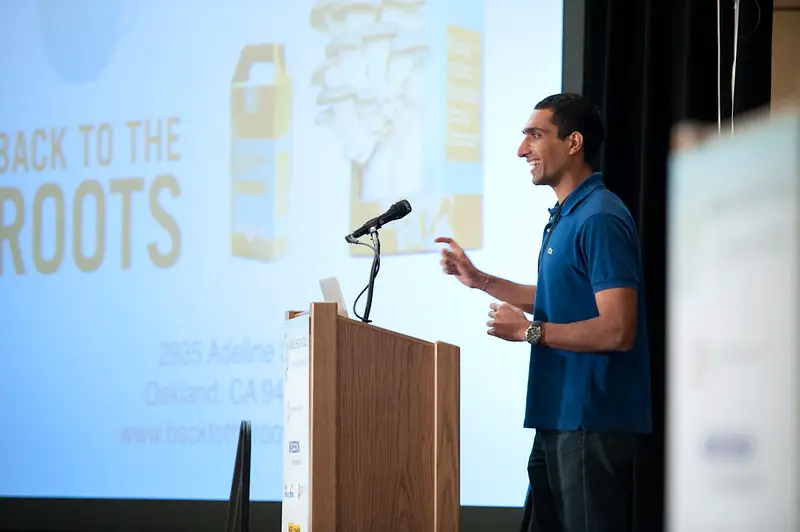Millions on this planet succeed in passing a turning point in the life cycle per year. For example, we start to follow a nutrition system, more workouts and get enough sleep. It begins as a commitment for exercises, replacing junk food with fibers, and going to bed early at night. It’s going really wonderful.
Yet, something occurs at sudden. Week after week, this healthy system of habits begins to shift away. It starts with one day off it, followed by a week, and another week. Eventually, and in a short time, we end with doing nothing at all. Why do we wonder how hard it is to set long-term shifts in our routine?
BJ Fogg, Professor in behavioral sciences at Stanford, responds to this question: it’s because we make a huge step at once. Therefore, instead of taking step by step as a 10-minute exercise in-house as a start, we tend to follow tough workouts for a couple of hours at the gym.
Such a path of change has a problem in elevating the quality of our life. Then, when this startup excitement declines and our muscles start to ache, impulse breaks down and our subscription in the fitness club turns into a regret notification alarm of failure.

Chapter 1 – Making a good change might be a piece of cake, it just needs another path.
Everybody wishes to have a turning point. Some individuals whose desire is to master life with a nutrition system and fitness; other people want to be more inventive or to have space to reveal their productivity. Yet, the current media reports on the high scales of obesity, insomnia, and work discontent tell that things are not right. This says that a huge distance between our wishes and our actual doing exists. Following the pattern, we think such dissatisfaction happens because we are short of determination. But we got it wrong.
In case you failed once in bringing a new good behavior to your routine, it’s most likely that you upbraid yourself – that you should’ve shown more determination and commitment and you would’ve succeeded, is that correct?
Actually, this is not totally true. For the next chapters will demonstrate that no strong proof of the idea that self-impulse is the main device for emerging new habits. Consequently, you’re not the guilty one here – it’s the path you choose.
Imagine it like this: when you come to put together a wardrobe of drawers, yet the guidance sheet for that doesn’t seem right and major parts are not there, you wouldn’t make it. This will make you angry, but for sure, not of yourself. No – you’ll blame the shop and call them for reimbursement. On the other hand, if it was about self-enhancement, the shop is not the first to blame.

This must take a different path. How? Have a new, double-move way.
One, don’t upbraid yourself. When you’ve encountered difficulties in changing your habits before, it was likely your fault in how you did it. And for a clear reason: good intention has always been there but with no systematic guidance. It’s simple to turn your behavior out only if you’re aware of human behavioral science, which we’ll zoom in here.
Two, you should consider your ambitions – for example, to succeed in defeating obesity in the long-run, or to plan for your pension to retire sooner than later – then, divide them to be controllable and achievable in the short-term.
Such an approach makes a long-lasting change. Moreover, this is a proven theory. In Stanford Behavior Design Lab, our author conducted studies, tested on more than 40,000 human subjects and came up with an enhanced methodology throughout the time.
Shall we begin? Awesome – let’s deepen in!
Chapter 2 – If you wish for an effective sustainable change, do it step by step.
Would you handle preparing completely healthy food every day? What about writing an appreciating journal article and jogging every day? If you find it hard to adapt to such many new behaviors, you’ll get the assistance you need.
Let’s begin with analyzing a false popular act – the Information-Action Fallacy. In such a concept, people tend to change their acts and doings after only after you provide correct information. As it’s a fair theory, it, unluckily, appears not to be completely true; this needs more than just solely facts.
Yet, what is it that triggers the shift in attitude? Alright! Fogg’s studies have come up with three resolutions for shaping behaviors: epiphanies, ecological developments, and small pinches to the current behaviors. Let’s have them one by one.
Epiphanies, to have a disclosure at sudden, are not possible to be produced in awareness – except in case you have some sort of supernatural skills. Furthermore, ecological developments are not something you can dominate; in the end, it’s difficult for you to convince all your friends to do yoga just because you start embracing it.
Now, we’re left with small current behaviors. They are tiny rabid doings as a one-minute act in full, such as flossing just one tooth. The whole concept is, to begin with, small acts to finish the job more smoothly. Moreover, once you kept doing it progressively, the happier you would be. The matter that initiates a feedback cycle which, through time, “wires in” fresh behaviors. The most prominent, small acts are doings you would begin with immediately.

In the next sections, we are not aiming for certain behaviors. Rather, we’ll illustrate an approach that would assist you with keeping on the behavior you embrace. Yet, the first thing to do is to see Fogg’s small behaviors to be enlightened about the way in which these acts are done.
The concept of Maui Habit, as he names it – it’s been named after the Hawaiian island where he was at the period when he figured out the concept. Every time he wakes up in the morning and as he rises up and steps on the ground he keeps telling himself: “It’s going to be a great day”. Doing so, he gathers positive energy and emotions as much as he can. Day by day, the slogan turned into a spontaneous reaction. Surprisingly, in case he knows this day would most likely be a tough one, he keeps telling himself, “It’s going to be a great day – one way or another”
For Fogg, despite its smallness, it has been a major turning point. As regardless of how difficult life may become, he finds a window half-open all the time for a fine day.
Chapter 3 – Three major factors control human behavior – motivation, capability, and triggers.
Perhaps you’re already aware of the idea that changing your routine requires changing your attitudes. What you missed, on the other hand, is two factors tell if you are going to make it or not.
When you look at all your habits, they all seem quite the same to you. If it’s having breakfast, getting dressed, or washing your face, all habits come from the three factors. One, it’s the motivation, when you wish badly to do something. Two, the capability, or your will to do that thing. Three, the triggers, that form an impulse for you to perform. To see how they all build behaviors in life, let’s check the following instance.
The American Red Cross collected $21 million in one week only to aid the ones who suffered from a destructive earthquake in 2010 Haiti. How did the organization provoke the community to provide such a decent donation? Alright! The three factors worked on the stage here. All of them prompted the motif – donate money.

The disastrous effects of Haiti’s earthquake were dramatically and emotionally published, thus, the motivation to aid was maximized. Furthermore, giving donations happened simply. It was just through people replying to a message that came to their mobiles. The issue that revealed people’s capability to donate from their mobile balance rather than credit cards. Our author, for instance, made his donation during his exercise at the fitness club. Finally, the message trigger was perfect to hook the community’s awareness and drive them to act positively at that time.
When all these factors assemble together, an attitude most probably tends to occur. Of course, motivation solely leads people – on some occasions – to act amazingly – as moms throwing themselves on cars to rescue their kids. Yet, the scale of motivation for all people is not fixed at a good level, this explains how they behave according to their capabilities. Except for an explicit trigger that would happen.
Consider one behavior that we all wish to leave behind: tracking our social media accounts early in the morning. This occurs since all three factors are running. First, it gives us pleasure, this is motivation. Two, it happens simply using our phones, which is easy to get in hand. Finally, our phones are already there cause we set them for waking alarm, that we need to grab the phone firstly to stop it.
his demonstrates, as a whole, how straightforward a habit is that makes you most likely to perform. Moreover, as you will figure it out in the two coming sections, this idea will assist you to lessen the undesired behaviors and to produce more wanted ones.
Chapter 4 – Motivation might be enough for one habit, yet it must accompany the others for a long-lasting change.
Have you ever come to know that more than a hundred million people register annually for distance-learning programs while only ten million manage to graduate? The rest of them, on the other hand, withdraw. The reason? The same as why individuals pile unused fitness subscriptions in hand and forgotten vegetable juices machine in their ground-floors. They fall in the regular mindset ambush: they depend solely on the power of motivation.
Motivation can achieve huge efforts. It can suggest for disabled travelers to cut distances to catch a flight or train-trip that is about to depart. It can drive an alcohol addict to start his AA sessions and an administrative officer ever since starting over her profession as an artist. Yet, the truth about these huge one-time acts of motivation: they’re fit for difficult decisions about behaviors to be taken one time in life.
Long-lasting change, on the other side, suggests having the same habits to be done every two days. This is what most people fail to remember. Rather than focusing on things they can perform at the moment, they focus on ambitions. Such far targets are like minimizing your time using the computer, taking a deep breath with your kids, or following a diet.
Ambitions are non-material results; they inform you about the targets you’re attempting to achieve and not the manner in which you will accomplish them. Therefore, motivation will not do solely. Just think of a person asking you to reduce your blood sugar by 10 percent right the way in exchange for one $1 million. Regardless of the motivation here, you won’t be able to do it, because it’s not possible – not in any way – that you sleep well immediately or lose weight just before a meal.

Attitude is what fills the hole between now and the accomplishment you wish for later on. Look at the following daily example – saving – to understand the mechanism.
In banks, they give you tips on how to keep emergency cash aside, for instance, to fix your roof that begins to leak or your car engine. To have saved cash for such expenses is quite an ambition, yet, how do you achieve this? Okay, most likely that you won’t get rich and put $500 aside right now. But you can act in a way that would make you able to save this amount of money. Say, you managed to contact the cable company immediately to reduce your service subscription to the minimum. Or you may collect whatever change in your pockets and place it in a savings jar.
Attitudes, to put it this way, help you to make a change for you can perform them at the moment.
Chapter 5 – The simpler a behavior is, the more likely that you’ll embrace it.
Instagram’s promoters realized already, when they recommenced it in 2010, that individuals were motivated to use it to publish their images. Yet, the second factor of attitude; capability, was never considered by anybody. And that’s what distinguished the app. Taking, uploading, and publishing an image has been done by only a few steps. That was amazingly simple, moreover, people adored its user interface. Within two years only, the firm was purchased for one billion dollars. Now, it’s value reaches a hundred billion dollars! Thanks to its easy use.
Making wishful attitudes easy is a wonderful path for shaping small habits. And the leading method to perform that is through studying the question; how difficult an attitude can be done. The matter that normally leads to one of many reasons; time, cost, physical ability, rational efforts, which all cope with your existing system.
Think of your decision to exercise your workouts by finishing a session of 20 pushups every day. Alright! Time is not a problem at all – as pushup exercise doesn’t need much time. Money? Definitely not. Doing pushups at your house won’t cost a thing.
Then, what about physical ability? That’s it, this is the obstacle number one! Eventually, perhaps you haven’t performed one step of the exercise for a long time, therefore your core is too weak to do it.
Then, there are your rational efforts. Pushup exercise isn’t really a joyful one. Precisely if it’s physically difficult, thus, motivation would be a problem as well.
Bearing these reasons in mind, would you believe that your pushup exercise is likely to be a habit?

Not exactly, correct? When you have less capability to perform something, you’ll perform it only on days when you follow a high motivation. Furthermore, as we’ve learned, huge motivation is perfect for finishing hard, small acts, yet not that useful for doing habits over and over again. That reveals your need for concentration on capability when you shape your small behaviors and make them as easy as you can.
Thus, let’s assume your goal on a daily basis is to finish two times wall pushup. They’re simple and work on your muscles too. Performing this exercise doesn’t need a huge motivation, but it does give you positive energy. It widens your limits for performing a daily behavior and increases the possibility that it will be a sustained one.
For all you can see, embracing this approach to startup new behaviors assist you in exploring paths to make them easy and channel them to your daily routine.
Chapter 6 – You can form impulses to spark off wishful habits that belong to you.
Wherever you go, you find impulses around you that provoke certain reactions. If it’s the sounds of your belly when you’re hungry that prompt you to have food, or the green traffic light that says you can go now, such impulses declare: “Do this behavior now”! It’s a spontaneous mechanism – you just go on to behave before you spend time thinking it. And such spontaneity offers the opportunity to build good changes in your living system.
There’re various kinds of impulses in life, among them are negatively formed ones. Pressing the phone buttons, for instance, are regularly more obvious than the “alarm off” ones, the matter that facilitates the act of pressing the button instead of getting up from your bed. This picturizes a state of insufficient contextual impulse; a one in your atmosphere.
And there’s the provoker person, your innate that speaks in your head requesting you to act in a certain way. For instance, the time you feel you want to use the restroom, pressure in your cyst happens which is a regular impulse for this behavior. Unlucky, an inner impulse voice that would provoke you to pick up the laundry doesn’t exist, or a one tells you about your father’s birthday in a few days.
Yet, the most powerful kind of impulse is the action one. It’s the simplest impulse to hack, which makes it a worthy device to use for designing small habits.
Action impulses are habits you do anyway, and it provokes you to start new habits too. Look at this incident that happened to the author. When he made up his mind to exercise workouts, he thought of a reliable impulse that comes many times every day. What was it? Using the restroom. Therefore, each time he used it, he performed two pushups. Before he knew it, this turned into a fixed habit; seven years passed and he still keeps the habit. According to the amount of water he drinks, he makes his pushups and occasionally it goes to 50 per day.

It’s easy to understand why action impulses provoke behaviors. Other than building brand new habits, you’re using your daily life to do so. Boiling water for coffee, taking the kids to school, taking off your jacket once you arrive home – you can choose one of these current routines to make it an impulse for new behaviors. What’s most wonderful about it, these acts are spontaneous. By the time you exercise it, using the restroom and boiling kettles turn into spontaneous impulses for pushups, doing mindful breathing, or any other new habit you want to have.
Eventually, do you think you can choose any routine habit to set as your provoker? Not exactly. The following section introduces you to certain types of impulses that are the best for creating habits.
Chapter 7 – When you form your action provokers, think of location, frequency, and theme.
The same as anchors, action impulses prevent you from floating without goals, yet you need to pay attention to the place where you leave them. Best places are where daily habits – you do many times – take place, day after day. Such habits must be fixed daily among the variable ones on a daily basis. And you need nothing to do now but to search for them.
The physical location is the first to consider for you’re shaping action impulses. Is it possible to use your restroom as a provoker, say, for pushups? This is possible only in case you work from home like Fogg. Spending the whole day at your work office, on the other hand, requires you to find another impulse.
Then comes the frequency. In case you wish for your small habit to be a one-time-a-day habit, pick an action you perform one time a day. Fogg met this client of his who desired to embrace a small habit every morning of naming the works to be done on that day. Thus, she linked this new habit to one-time-a-day action of taking her children to school, and it was successful. On the contrary, in case you wish to perform that small habit of yours multiple times, then your impulse must be of the many times occurrence.
In the end, the best linkage happens thematically for the wishful habit. For example, you wish to have one glass of water once you wake up. For the impulse, it would be your routine behavior of watering the jade plant in your bedroom. You might think of “care” as the new habit’s theme. Watering a plant in the house makes it grow, which is exactly what will happen when you “water yourself”.
Brushing your teeth, on the other hand, isn’t the right impulse to sweep the garage. The reason? Okay, because here you didn’t specify the location nor the frequency of the two habits. The issue that most probably won’t form a spontaneous, habit-shaping relationship between the two.
In some cases, you can see some habits that are paired with impulses. Back to the teeth brushing habit, it would form a good impulse only if you aim to make it tidier rather than clean. Yet, this might not apply to other behaviors that are harder to know its impulses. Therefore, keep in mind that shaping impulses are a matter of experiment.

Learn from Fogg’s advice. He created a habit of mind breathing for one minute once he laid his head on the pillow. The anchor was perfect, yet, the result he wished for wasn’t completely satisfying. So he decided to replace the mind breathing with another habit using the same impulse: to remember one thing that makes him feel grateful. The habit brought a sense of joyful vitality in his mind confirming to him that he succeeded in associating the right impulse to the right small habit.
As much as you practice the shaping of new habits, the more skillful you’ll be at the principles explained in the previous sections. And when it happens, you’ll start to sense those joyful vitalities. The matter that reveals the fact that you’re approaching your ambitions in one tiny step at the minimum.
Tiny Habits: The Small Changes That Change Everything by B.J. Fogg, Doug Abrams Book Review
Common wisdom suggests that building a good change is related in whole to willpower. Well, this is not true. The best path to modify your behaviors is the baby-steps and to stop taking bigger bites than your mouth can take. Human behavior is determined by motivation and ability. The matter that explains our tendency for picking the fruit which is near to hand from the tree and perform what could be simply done. And this is the key to shaping small behaviors. When you perform a simple doing, your chances of finishing that doing are high.
Follow “starter steps” to sustain your new behaviors.
Creating new behaviors is related only to changing your thoughts. This won’t happen in one day. This is the reason for the wellness of starting slowly. Bear in mind, you want for your new small behaviors to live, so you build solid roots first. That’s where baby-steps assist you. It’s a small step toward the ultimate habit. For example, you decided that you want to go walking for a few miles every day. One easy provoker step would be putting on the walking shoes every morning. Repeat this in your mind: “I don’t even have to walk, I just need to put my shoes on.” This will reduce any pressure that walking habit might create and before you know it, your walking miles maybe extend beyond your neighborhood.

